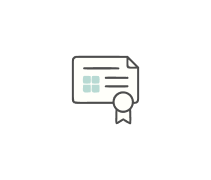Emptying the Recycle Bin will free up your disk space. Files and...
From the Windows desktop, you can launch programs from the Start menu,...
Which of the following manages hardware; runs applications; provides...
Mac OS X provides superior Plug and Play capabilities and better...
What is normally located at the bottom of the Windows desktop,...
With an icon-driven interface, sometimes called a(n)...
An OS manages files and folders using a file system. Two Windows...
Which of the following is an upgrade from Windows 2000 and provides...
Which of the following is NOT an available option for launching an...
Another name for a logical drive is volume.
A file extension identifies which of the following?
Which of the following is the primary Windows tool that can be used...
When you refer to a drive, directories, and subdirectories that are...
The Control Panel in Windows would be most similar to ______________on...
In some troubleshooting situations, the mouse is not usable. At those...
With a ____________ interface, you type commands to tell the OS to...
Which of the following operating system has been used in...
What is the first Windows OS to allow multiple users to log on...
________________________ are small programs stored on the hard...
Every OS is composed of two main internal components: a shell portion...
Using Explorer or the Computer window, you can view and change the...
What does every OS use to organize a hard drive, optical drive, floppy...
Which of the following is a major update or fix to an OS occasionally...
Which of the following is a window containing several small utility...
Which of the following gives a wealth of information about installed...
Different versions of Unix or Linux are sometimes called...
Which one of the following is NOT a type of software?
The Windows operating system uses which of the following, to keep...
CPU's operate in one of a possible how many modes?
The Windows System Tray contains quick launch icons.
















